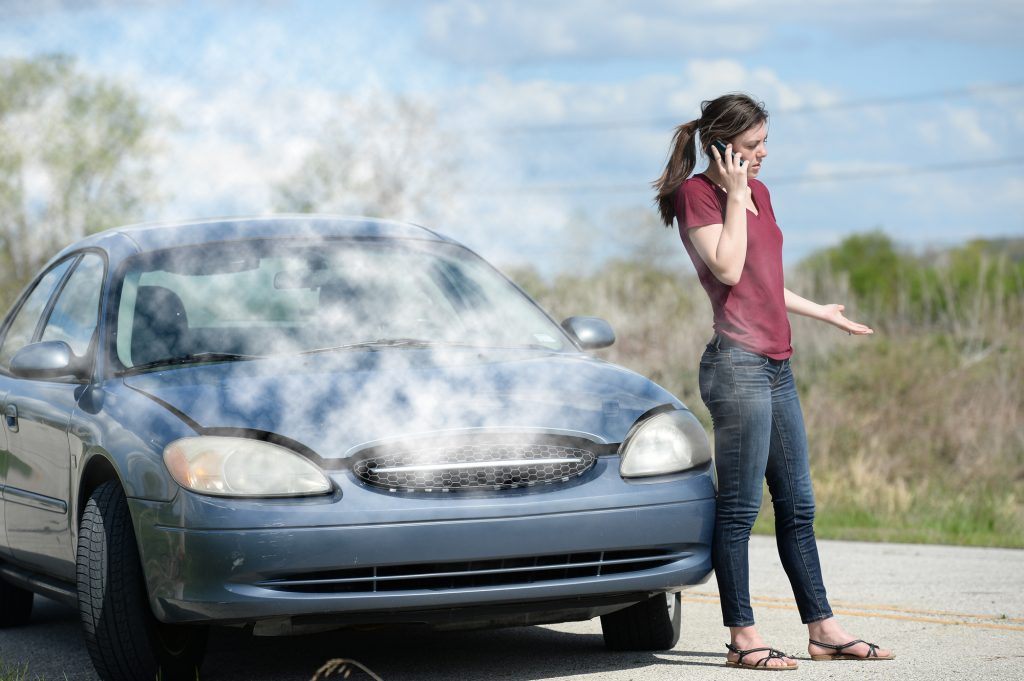10 Common Car Problems You Can Fix Yourself (And Which Ones You Shouldn’t!)
The average American spends about $1,186 each year on vehicle maintenance on a new car.
That’s a good chunk of money to dedicate to vehicle maintenance each year. And that cost only increases as your car gets older.
One way to reduce the annual cost of your car’s maintenance is to do some of the auto repair troubleshooting yourself. There are several maintenance tasks and repairs you can easily do yourself with the right equipment and a little help from the internet.
In this article, we’ll cover several fixes you can make to your car and others you should definitely go see a mechanic for.
Replacing the Fuel and Cabin Filters
Replacing the filters in your car is a straightforward task that takes a few minutes.
To replace the fuel filter, pop the hood and unscrew the air filter box.
You want to unclip the filter and hold a flashlight up to it. If less than 50% of the light goes through, it’s time for a new filter.
You can save about $30 by replacing your cabin filter yourself. Head to your local auto parts store for the correct size filter.
Depending on your vehicle, the cabin filter will be behind the glovebox or under the console. All you have to do is remove the access panel, slide out the filter, insert the new one, and replace the access panel.
Change the Oil
Changing your oil every 3,000 to 7,000 miles (check your car’s user manual for their suggested timeline) can help keep your engine running for longer. An oil change at a garage can run you anywhere from $25 to $50.
You can save money by doing the oil changes yourself. You’ll need a few thing to change the oil yourself like an oil filter wrench, a drain pan, and a car jack.
Before you change your oil, see if you have a local household waste recycling center that takes used motor oil. You can also check with your local dump to see if they’ll take it.
Cover Up Paint Chips
Not only is chipped paint unattractive, it can also lead to accelerated rusting of your car.
If you notice paint has chipped off your car, you don’t need to go get a whole new paint job. All you need is some touch-up paint.
Head to your local auto shop to get paint, fine-tipped applicators, and grease remover. Clean the chip spot, apply the paint, and go over it with wax once the paint has dried.
Replacing Lightbulbs
You can easily change out non-headlight lightbulbs. Bulbs that illuminate your license plate or your fog lights are two easy examples.
You’ll need the correct replacement bulb, a screwdriver, and latex gloves.
To access the lightbulbs, unscrew the covering and pry the lens off. Using gloved hands, pull the burned out bulb straight out and replace it with the new one.
Using gloves on the new bulb is important as the oils on your hands can cause the new bulb to burn out faster.
Stop Your Sunroof From Leaking
Nothing’s more annoying than a leaky sunroof on a rainy day. Before you take it to the repair shop, do some auto repair troubleshooting.
A leaky sunroof means the drains are clogged.
Open your sunroof and locate the drainage holes at the front and back. If you see blockages, use a vacuum to clear them out. Test your work by running water through the drain holes and see if they filter out to below your car.
Switch Out Gas Lifts
After many uses, your gas lifts that hold up your trunk door or hood might give out. Those are easily replaceable.
Buy the new part from your auto supply shop and replace the faulty one using a metric socket wrench.
Replace the PCV Valve
The positive crankcase ventilation valve (PVC) controls the flow of flammable vapors back to the engine so they burn safely. The valve is meant to close in case of an emergency like an engine backfire.
Over time, this valve accumulates carbon buildup which can make the valve less effective. It’s something you can easily and regularly replace based on your car manufacturer’s instructions.
Fix Leather Tears
Fixing a tear in your leather seats is more for cosmetic purposes, but it can save you a good chunk of cash. All you need is a leather repair kit.
First, you’ll need to mix the colors to match your seats. Then, you will glue reinforcing fabric underneath the torn vinyl, apply the heat-set filler, and iron over a piece of fabric with a similar texture to your seat.
What you’ll be left with won’t be perfect, but it’ll look better than a ripped up seat.
Mend Small Dents
This won’t make sense for everyone since you do need a rotary sander and a good amount of patience.
Fixing dents on a car is similar to patching a drywall. You’ll sand down the dent, clean it off, apply several thin layers of body filler, then cover it with paint.
Replace Spark Plugs
A sign that you need a new spark plug is that your engine isn’t starting or running properly. It could mean the plugs are gummed up.
Replacing spark plugs is easy. Grab some replacements from your auto store, remove the covers on the engine, unscrew the plugs, and replace them with the clean ones.
Replacing spark plugs makes for easy auto repair troubleshooting.
Auto Repair Troubleshooting a Pro Should Do
When you have the equipment and know-how to fix many problems in your car, you save money over time. However, there are some problems you really should leave to the professionals.
Some of these fixes include:
- Adjusting the timing belt
- Repairing the transmission
- Error codes with stalling or surging
- Changing out suspension components
These maintenance tasks and fixes should be handled by seasoned auto mechanics. A shop like Tokyo Automotive Subaru auto repair is one such place that could handle those problems.
Wrapping Up
Simply put, when you have the right equipment to do your own auto repair troubleshooting, you’ll save a bunch of money on parts and labor. Once you get better at fixing small issues, you’ll find more money in your budget and spend less time at the repair shop.
For more DIY posts like these, check out our DIY section.





